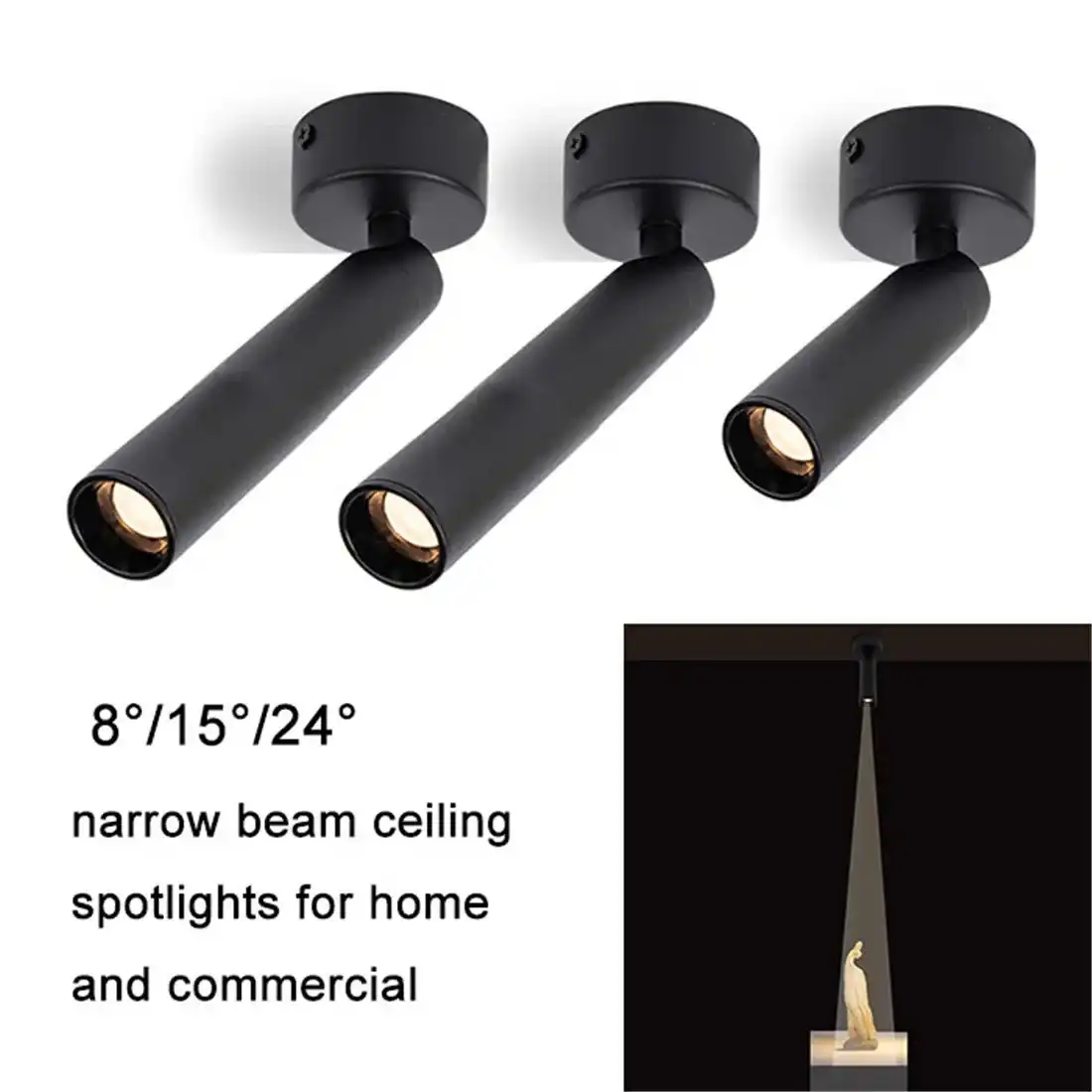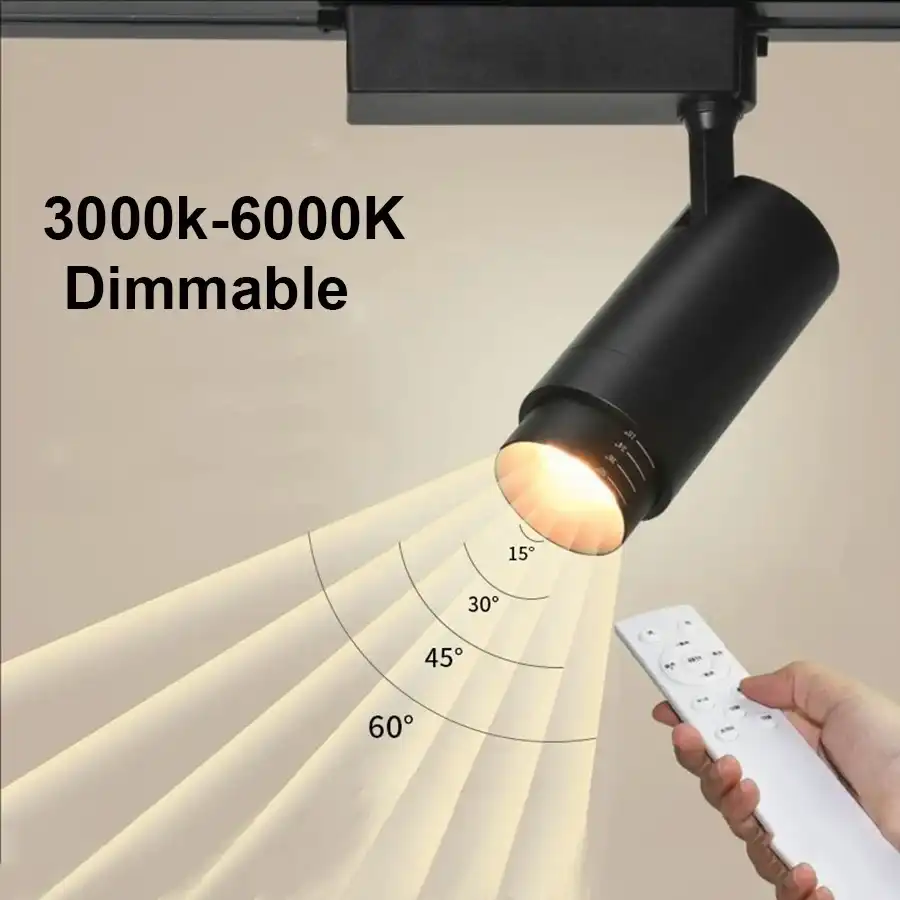What is recessed downlight for?
Recessed downlights are versatile lighting fixtures designed to be installed flush with ceilings or walls, providing focused illumination while maintaining a sleek, unobtrusive appearance. These fixtures serve multiple purposes, including general lighting, task lighting, and accent lighting in both residential and commercial spaces. Recessed downlights are ideal for creating a clean, modern aesthetic while efficiently illuminating specific areas or objects. Their ability to blend seamlessly into various architectural styles makes them a popular choice for homeowners, interior designers, and lighting professionals seeking to enhance the ambiance and functionality of indoor spaces.
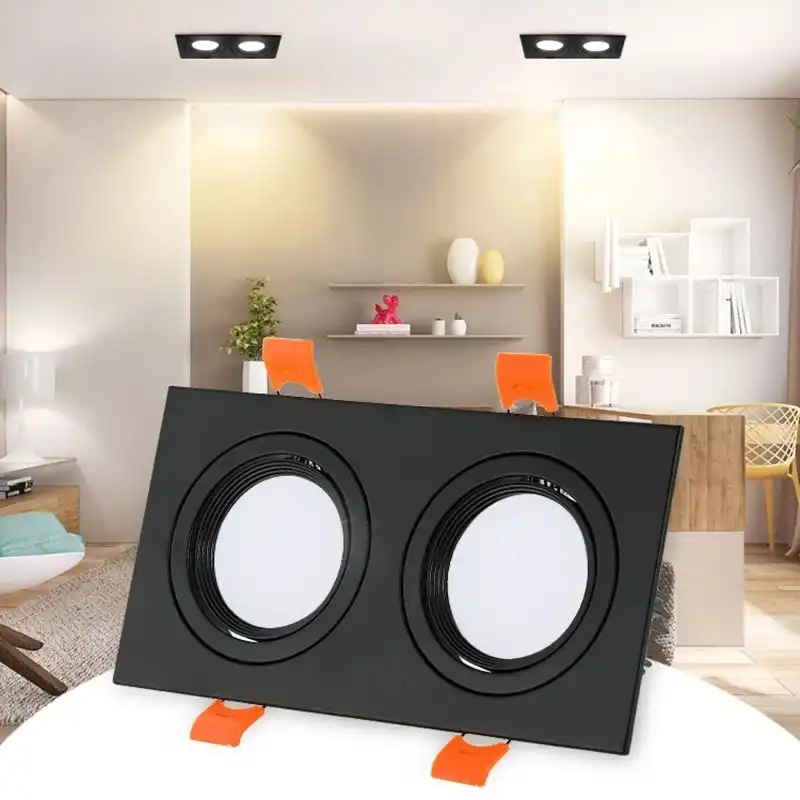
Types and Applications of Recessed Downlights
Residential Applications
Recessed downlights have become increasingly popular in homes due to their versatility and aesthetic appeal. In living rooms, these fixtures can create a cozy atmosphere by providing soft, ambient lighting. They're particularly effective when placed around the perimeter of the room, washing walls with light and making the space feel larger. In kitchens, recessed downlights serve as task lighting over countertops and islands, ensuring proper illumination for food preparation and cooking activities.
Bathrooms benefit from recessed downlights as well, offering even lighting that minimizes shadows and enhances grooming activities. In bedrooms, these fixtures can be used to create a relaxing environment, with dimmer switches allowing for adjustable light levels to suit different moods and times of day. Homeowners also appreciate recessed downlights in hallways and staircases, where they provide safe, consistent illumination without protruding from the ceiling.
Commercial Applications
The applications of recessed downlights extend far beyond residential spaces. In retail environments, these fixtures are instrumental in highlighting merchandise and creating an inviting atmosphere for shoppers. By strategically placing recessed downlights, retailers can draw attention to specific products or displays, enhancing the overall shopping experience.
Offices and conference rooms benefit from the clean, professional look of recessed downlights. These fixtures provide uniform illumination for workspaces while maintaining a clutter-free ceiling appearance. In hotels and restaurants, recessed downlights contribute to the ambiance, allowing for the creation of intimate dining areas or well-lit reception spaces.
Museums and art galleries often utilize recessed downlights to showcase artwork and exhibits. The focused beam of light can be adjusted to accentuate specific pieces without causing glare or overshadowing neighboring displays. This precise control over lighting is crucial in creating the desired visual impact and preserving delicate artworks.
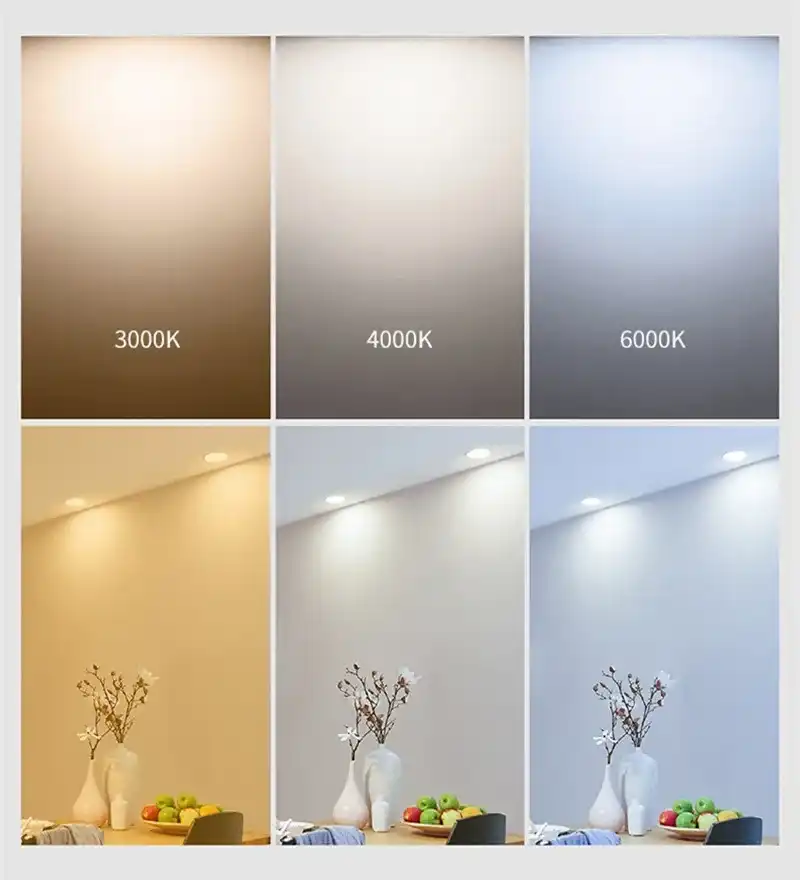
Outdoor Applications
While commonly associated with indoor spaces, recessed downlights also have outdoor applications. They can be installed in covered patios, pergolas, or underneath eaves to provide subtle yet effective lighting for outdoor living areas. In landscape design, recessed downlights can be used to illuminate pathways, highlight architectural features, or create dramatic effects in gardens.
For commercial buildings, recessed downlights in exterior soffits can enhance security and aesthetics, providing a well-lit perimeter without the need for obtrusive floodlights. This application is particularly valuable for hotels, restaurants with outdoor seating areas, and public buildings where a welcoming nighttime appearance is desired.
Technical Considerations and Installation
Choosing the Right Recessed Downlight
Selecting the appropriate recessed downlight involves considering several factors. The size of the fixture, measured in inches, should be compatible with the ceiling height and room dimensions. Common sizes range from 3 inches to 6 inches in diameter, with larger sizes typically used in spaces with higher ceilings or where more light output is required.
The beam angle of the downlight is another crucial consideration. Narrow beam angles (15-30 degrees) are ideal for accent lighting or highlighting specific objects, while wider beam angles (50-60 degrees) are better suited for general illumination. The color temperature of the light, measured in Kelvins, should be chosen based on the desired ambiance and the room's purpose. Warm white (2700K-3000K) creates a cozy atmosphere, while cooler temperatures (4000K-6500K) are more energizing and better for task-oriented spaces.
Energy efficiency is a key factor in modern lighting design. LED recessed downlights offer significant advantages in terms of energy consumption and longevity compared to traditional incandescent or halogen options. When selecting LED downlights, pay attention to the luminous efficacy (measured in lumens per watt) and the color rendering index (CRI) to ensure optimal performance and light quality.
Installation Considerations
Installing recessed downlights requires careful planning and execution. The first step is to determine the ideal placement of the fixtures based on the room's layout and intended use. In general, downlights should be spaced evenly to provide uniform illumination, with the distance between fixtures typically equal to half the ceiling height.
Before installation, it's crucial to check for any obstacles in the ceiling cavity, such as joists, electrical wiring, or HVAC ducts. New construction housings are designed for installation before the ceiling material is in place, while remodel housings are suitable for retrofitting existing ceilings. Insulation contact (IC) rated fixtures should be used in areas where the housing may come into contact with insulation to prevent fire hazards.
Proper electrical connections are essential for safe and reliable operation. Many modern recessed downlights feature integrated LED modules with dedicated drivers, simplifying the installation process. However, it's always recommended to consult with or hire a qualified electrician to ensure compliance with local building codes and safety standards.
Maintenance and Upgrades
One of the advantages of recessed downlights is their relatively low maintenance requirements. LED fixtures, in particular, have extended lifespans that can exceed 50,000 hours of operation. However, periodic cleaning of the trim and lens is recommended to maintain optimal light output and appearance.
As lighting technology continues to evolve, upgrading existing recessed downlights can provide significant benefits. Retrofit LED modules are available for many older fixtures, offering improved energy efficiency and light quality without the need for extensive renovation. Smart lighting systems can also be integrated with recessed downlights, allowing for advanced control options such as dimming, color tuning, and scheduling through mobile apps or voice commands.

Design Trends and Future Outlook
Contemporary Design Aesthetics
Recessed downlights continue to play a significant role in contemporary interior design. The trend towards minimalism and clean lines in architecture aligns perfectly with the unobtrusive nature of these fixtures. Designers are increasingly using recessed downlights to create layered lighting schemes, combining them with other light sources to achieve a balanced and versatile lighting environment.
In recent years, there has been a shift towards smaller aperture sizes, with 2-inch and even 1-inch downlights gaining popularity. These micro downlights offer the same lighting benefits as their larger counterparts but with an even more discreet appearance, allowing for greater flexibility in lighting design and installation.
The finish and trim options for recessed downlights have also expanded, allowing for better integration with various ceiling materials and color schemes. From traditional white to metallic finishes and even custom colors, these options enable designers to create cohesive lighting solutions that complement or contrast with the overall interior design.
Technological Advancements
The rapid advancement of LED technology continues to drive innovation in recessed downlighting. High-efficiency LEDs with improved color rendering and consistency are becoming standard, offering better light quality and energy savings. Tunable white technology, which allows for adjustment of color temperature, is gaining traction in both residential and commercial applications, enabling users to customize the lighting to suit different activities or times of day.
Integration with smart home systems is another area of growth for recessed downlights. Wi-Fi enabled fixtures that can be controlled through smartphone apps or voice assistants offer unprecedented convenience and energy management capabilities. Some advanced systems even incorporate occupancy sensors and daylight harvesting features, automatically adjusting light levels based on room occupancy and available natural light.
Sustainability and Energy Efficiency
As energy codes become more stringent and environmental consciousness grows, the focus on sustainable lighting solutions intensifies. Recessed downlights are at the forefront of this trend, with manufacturers continually improving the energy efficiency of their products. LED downlights with efficacies exceeding 100 lumens per watt are now common, significantly reducing energy consumption compared to traditional lighting technologies.
The use of sustainable materials in the manufacturing of recessed downlights is also gaining attention. Some manufacturers are exploring recyclable components and reducing the use of harmful substances in their products. Additionally, the long lifespan of LED downlights contributes to sustainability by reducing the frequency of replacements and associated waste.
Conclusion
Recessed downlights have established themselves as a versatile and essential component of modern lighting design. Their ability to provide focused illumination while maintaining a sleek aesthetic makes them suitable for a wide range of applications, from residential spaces to commercial environments. As technology continues to advance, recessed downlights are poised to become even more efficient, intelligent, and integrated into the overall building ecosystem.
To learn more about cutting-edge recessed downlight solutions and how they can enhance your space, don't hesitate to reach out to our team of lighting experts. Contact us at sales@uskyled.com for personalized advice and product recommendations tailored to your specific lighting needs.
References
1. Winchip, S. M. (2011). Fundamentals of Lighting. Fairchild Books.
2. Gordon, G. (2015). Interior Lighting for Designers. John Wiley & Sons.
3. Karlen, M., & Benya, J. R. (2004). Lighting Design Basics. John Wiley & Sons.
4. DiLaura, D. L., Houser, K. W., Mistrick, R. G., & Steffy, G. R. (2011). The Lighting Handbook: Reference and Application. Illuminating Engineering Society.
5. Russell, S. (2012). The Architecture of Light: Architectural Lighting Design Concepts and Techniques. Conceptnine.

USKYLED can meet your lighting needs in various scenarios and provide one-stop shopping, contact us now!
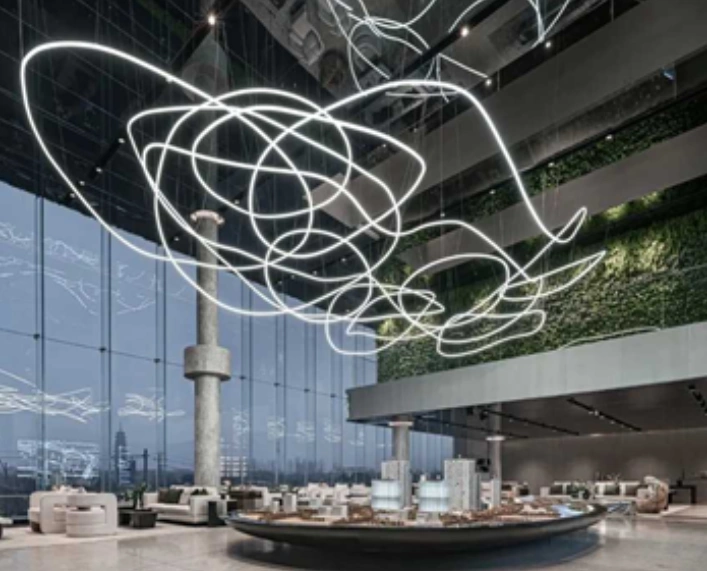
Why You Should Choose USKYLED?
![What is Dimmable Track Lighting for Museum: Best Guide [2025]](/icms/upload/0d08cc601e7611f0b542b3ca0c0f4a83/pic/knowledgemanager-knowledgepic/e7879f32605f11f081911f363b8c1ed0/Directory/20250717 dimmable track lighting -1(1)_1752739217941.webp)
